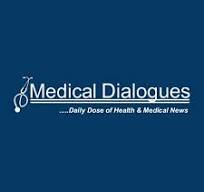Airborne bacteria pose hidden threat in cardiac ORs, study warns
Editor's Note
Air quality in cardiac ORs may be a silent driver of surgical site infections (SSIs), with airborne contamination linked to significantly elevated infection risk and mortality—especially when ventilation is suboptimal. A newly published study covered by Medical Dialogues May 19 reveals that one-third of bacteria in cardiac procedures can enter directly through the air into surgical incisions.
According to the article, the researchers assessed airborne microbial contamination in cardiac ORs using two techniques: the traditional settle plate method and an active Surface Air System (SAS) air sampler. Petri dishes were exposed to air in the OR for 1 hour to measure total viable counts (TVC) in colony-forming units per cubic meter (CFU/m³). The results highlighted conventional OR ventilation systems yielded microbial loads between 50–500 CFU/m³, while ultra-clean environments maintained levels under 20 CFU/m³. Notably, adult cardiac ORs showed significantly higher bioloads than pediatric ones, likely due to longer procedures and more personnel present.
The article points to the high stakes of infection prevention in cardiac surgery: SSI incidence ranges from 0.25% to 4%, with mortality rates potentially reaching 30%. Patients developing SSIs after cardiac surgery face up to an 11-fold increase in mortality risk and longer hospital stays. Contributing factors span preoperative (eg, diabetes, obesity), perioperative (eg, OR environment and sterility), and postoperative (eg, wound care) phases.
The outlet reports that while settle plate methods are simple and low-cost, they primarily capture larger particles that settle by gravity. In contrast, active air samplers collect a broader spectrum of airborne contaminants and deliver more robust and representative data. However, lack of standardized guidelines and defined contamination thresholds poses a challenge to broader adoption and consistency in air monitoring practices. The article concludes that future directions should include establishing evidence-based protocols for air quality monitoring, improving infection control standards, and prioritizing airborne contamination as a key factor in SSI prevention strategies.
Read More >>

 Free Daily News
Free Daily News